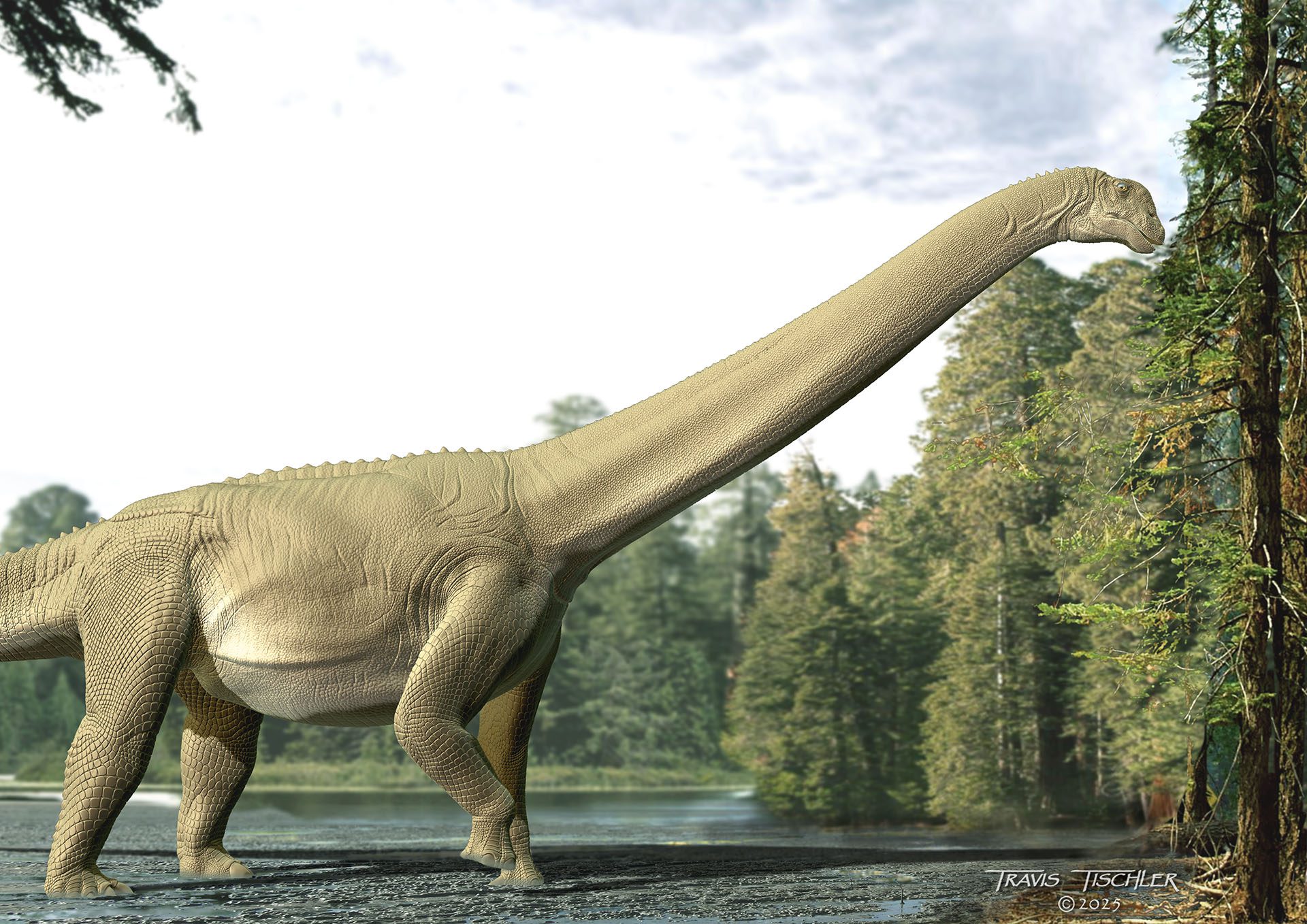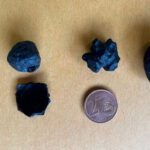A Curtin-led research team has found the world’s first reported stomach contents of a sauropod dinosaur, learning more about the feeding habits of one of the largest terrestrial animals of all time.
Published today in Current Biology, the research team analysed the fossilised stomach contents of the 95-million-year-old sauropod – a Diamantinasaurus matildae specimen nicknamed Judy – discovered on a property near Winton and excavated in 2017 by staff and citizen scientists at the Australian Age of Dinosaurs Museum of Natural History.
Within Judy’s stomach contents, the research team found pinnules and bracts from tall conifer trees, along with leaves and fruiting bodies from smaller seed ferns and flowering plants.
Lead researcher Dr Stephen Poropat, Deputy Director of Curtin’s Western Australian Organic and Isotope Geochemistry Centre (WA-OIGC) in the School of Earth and Planetary Sciences, said the research findings revealed that sauropods ate a variety of plants from various heights above the ground, and that this contributed to their long-term success.
“Ever since the late 19th century, palaeontologists have firmly regarded sauropods as herbivores. However, the specific plants that they ate, and the height above ground at which they fed, have remained unknown — until now,” Dr Poropat said.
“The stomach contents we found belonged to a 12 metre-long, subadult sauropod that would have still been growing at its time of death. Our findings show that at least some species of subadult sauropods were able to feed at a variety of heights above ground and easily adapt to the various climatic, environmental, and vegetation changes throughout the Jurassic and Cretaceous periods.
“We also confirmed that sauropods were bulk-feeders – a method still used by herbivorous reptiles and birds today. This means they would not have chewed their food, instead swallowing it whole and letting their digestive system do the rest of the work. Any given meal would likely have resided in their digestive tract for up to two weeks before waste from that meal was excreted.”
Dr Poropat said finally being able to look inside the first reported sauropod stomach contents had confirmed previous hypotheses about the sauropod species.
“Sauropods were remarkable animals that roamed the earth for more than 130 million years. Understanding their diet is critical to understanding their impact on Earth’s ecosystems — particularly on plants and other herbivorous species — throughout that time,” Dr Poropat said.
“Further research and ideally finding more sauropod fossils with stomach contents will be needed to determine whether their feeding habits changed as they matured, and particularly whether they continued to eat low-growing plants, which they fed on as juveniles, throughout their adult lives.”
John Curtin Distinguished Professor Kliti Grice, Founding Director of the WA-OIGC and ARC Laureate Fellow, said it was the first time biomarkers and molecules have been identified in the gut contents of a sauropod.
“By using advanced organic geochemical techniques, we were able to confirm the presence of both angiosperms and gymnosperms in the diet of this sauropod. This unique approach was what provided molecular evidence of the plants that sauropods consumed,” Professor Grice said.
The full paper, titled “Fossilised gut contents elucidate the feeding habits of sauropod dinosaurs,” can be found online here. This research was funded through a 2021 ARC Laureate Fellowship awarded to Professor Grice (FL210100103: Interpreting the molecular record in extraordinarily preserved fossils).



